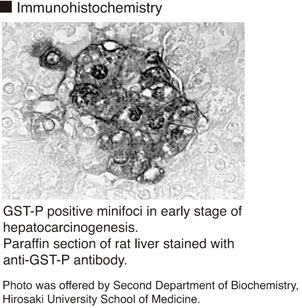Antibody Clonality:
Polyclonal
Applications:- Immunohistochemistry (IHC)
- Western Blot (WB)
No additional charges, what you see is what you pay! *
Stay in control of your spending. These prices have no additional charges, not even shipping!
* Rare exceptions are clearly labelled (only 0.14% of items!).
Multibuy discounts available!
Contact us to find what you can save.
This product comes from:
United States.
Typical lead time:
10-14 working days.
Contact us for more accurate information.
- Further Information
- Documents
- References
- Show All
References
1) Suzuki, R., et al., Carcinogenesis 27, 619-630 (2006)
2) Ueno, S., et al., Clin. Cancer Res. 11, 5645-5650 (2005)
3) Hasumura, M., et al., Toxicol. Sci. 86, 61-67 (2005)
4) Sukata, T., et al., Am. J. Pathol. 165,1479-1488 (2004)
5) Suzuki, S., et al., Carcinogenesis 25, 439-443 (2004)
6) Nakaji, M., et al., Carcinogenesis 25, 389-397 (2004)
7) Oyama, K., et al., Carcinogenesis 23, 885-892 (2002)
8) Denda, A., et al., Carcinogenesis 23, 245-256 (2002)
9) Yan, Y., et al., Carcinogenesis 23, 189-196 (2002)
10) Zeng, Z-Z., et al., Cancer Res. 60, 2876-2881 (2000)
11) Ledda-Columbano, G. M., et al., Carcinogenesis 20, 2299-2304 (1999)
12) Kobayashi, Y., et al., Carcinogenesis 19, 1809-1814 (1998)
13) Denda, A., et al., Carcinogenesis 18, 1921-1930 (1997)
14) Endoh, T., et al., Carcinogenesis 17, 467-475 (1996)
15) Sato, K., et al., PNAS 82, 3964-3968 (1985)



